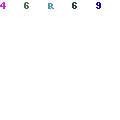Art therapy professors win “Best Paper Award” from professional journal
Children can name colors when using crayons, learn eye-hand coordination and, through art activities, “learn to share materials, tell stories and express feelings,” including other skills according to arts therapy professors Patricia “Gussie” Klorer and Megan Robb in their award-winning paper.
Their paper, “Art Enrichment (AE): Evaluating a Collaboration Between Head Start and a Graduate Art Therapy Program” measures and analyzes the effectiveness of a program that assists children of low-income families through art. The professors said they were surprised to learn after its evaluation by peer editors that it won the “Best Paper Award” from the “Art Therapy Journal of the American Art Therapy Association.”
Klorer said their paper was the inaugural recipient of the award from the peer reviewed journal. It was published in 2012 and recognized last summer at the American Art Therapy Association’s annual conference in Seattle, Wash.
“I was very surprised and honored,” said Klorer who created the SIUE Arts Enrichment program nearly 20 years ago.
The AE program requires first-year art therapy graduate students to complete fieldwork at Head Start Centers, which serve pre-school children.
According to Klorer, children are referred to the AE program when it is felt that they could benefit from more one-on-one attention.
“Art is used to help children increase their attention spans and follow directions, while also gaining skills in social competence, identification and expression of feelings, and age-appropriate emotional regulation,” Klorer said.
According to the paper, “approximately 120 children are referred to the AE program each year, but graduate students quickly learn that all children want their services.”
The paper reports that the graduate students try to involve all the children in the Head Start program in at least one activity each year, regardless of whether they were referred or not.
Robb said as a relatively new faculty member at SIUE she was apt to have a more “objective” perspective of the program. She was asked to provide data analysis which resulted in her co-authoring the article.
“I was really humbled that [Klorer] would partner with me on this,” Robb said. “She’s an excellent writer and artist and clinician… [It’s] very intimidating but resulted in a good experience for the both of us.”
Robb collected statistics from 10-point Likert scale surveys distributed to teachers and coordinators of Head Start to evaluate the program. According to their paper, survey questions were “designed to collect information about program coordination and communication, children’s responses and behaviors and an overall rating of the program.”
Robb said the program ranked consistently high and even more so when there were group-facilitated projects required in addition to the field work at AE.
The paper also describes larger community projects which added to the programs.
“In 2008, AE graduate students designed and implemented a community sculpture made of steel and 1,200 river rocks. Every child and staff person from the eight Head Start centers painted a rock-including the teachers, teaching assistants, coordinators, family workers, grandparents, cooks, custodians and administrators. These were assembled onto a steel armature in the shape of three figures representing Head Start’s commitment to enhancing the development of children, empowering families and strengthening communities,” the paper said.
During these times, Robb said she noted reviews of the program were at their highest.
Open-ended comments were also collected. According to the paper, “common themes” found in the comments by the teachers and coordinators included “professionalism, good two-way communication and helpfulness” by graduate students to the staff.
The paper concludes with a recommendation that other Head Start centers consider adding Art Enrichment programs to their curricula as a way of assisting “the development of positive social-emotional skills in preschool children.”
Klorer said she loves collaborating with the Head Start programs.
“It has been an amazing collaboration with them. It’s a win-win situation for everybody,” Klorer said. “It’s great experience for our students to go into Head Start centers and work with the kids, and it’s great for the little ones, who may not otherwise get much exposure to the arts.”
Filed Under: Art and Design • General CAS Stories













